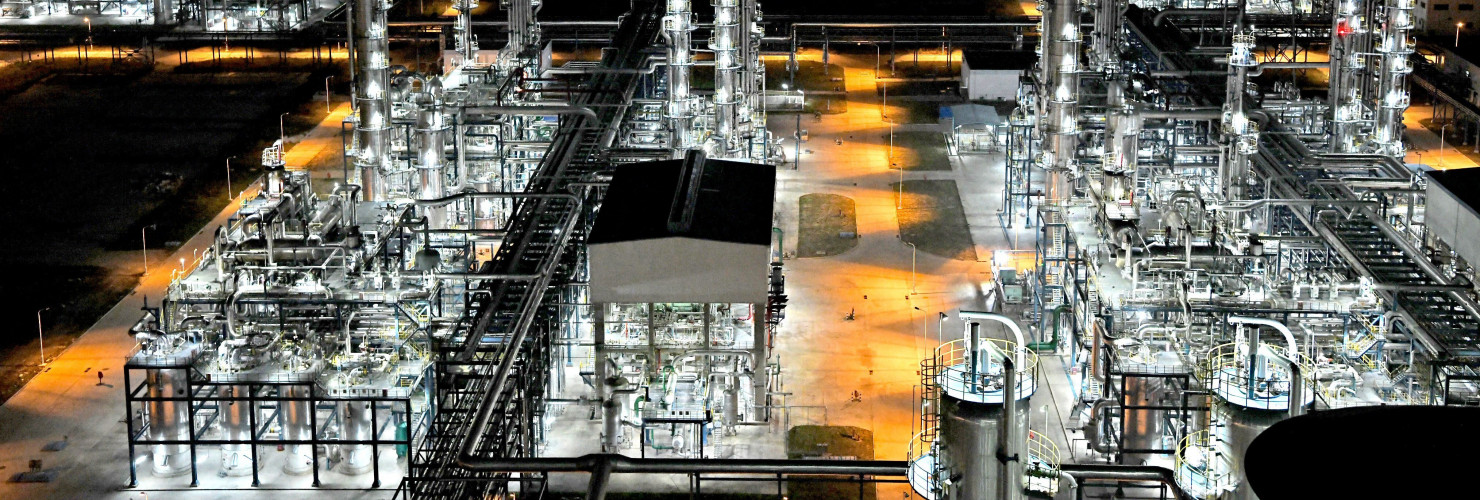

Foreign investment + Industry standards + Coal chemicals
MERICS Top 5
1. Beijing seeks to mend fences with foreign business
At a glance: As part of a wider private sector charm offensive, the State Council issued opinions on “further optimizing the foreign investment environment.” 24 directives were issued, with the following standing out:
- Increase efforts to introduce foreign capital in key areas like biomedicine, modern services and advanced manufacturing
- Guarantee national treatment for foreign-invested enterprises
- Strengthen the administrative protection of foreign investment and intellectual property rights
- Increase financial and tax support
MERICS comment: Due to the country’s post-pandemic economic woes, Beijing is eager to boost investor confidence and court foreign businesses. So far however, the solutions it is proposing appear superficial relative to the macroeconomic and institutional factors ultimately driving the slowdown, such as the excessive reliance on infrastructure and industry-led growth. Instead of accelerating China’s needed structural transformation, so far the State Council is focusing on foreign investment as a short-term stopgap solution.
Foreign business view the proposed measures with a skeptical eye, given the fact that they have been neglected, when not outright mistreated, in recent years. Inbound FDI is already at record low levels. A sense of déjà vu adds to the mood of uncertainty, with many of these measures echoing past broken promises. For instance, the granting of national treatment has been a long-running controversy going back to China’s accession to the WTO. Renewed commitments were already featured in the 2019 Foreign Investment Law to little effect. Whether or not China walks the talk this time will be the crucial question.
Yet, there is some reason for cautious optimism. Specific sectors like biomedicine, internet services and advanced manufacturing are singled out and targeted for investment promotion. China is looking to strategically direct FDI to sectors where it is behind, presenting opportunities to some select foreign industries. Moreover, the policy document calls for measures to “further clarify the specific standards for Made in China” status. These upcoming notices should provide clearer guidelines for foreign companies seeking this privileged label, thereby improving the operational environment.
Article: Opinions of the State Council on Further Optimizing the Foreign Investment Environment and Increasing Efforts to Attract Foreign Investment (国务院关于进一步优化外商投资环境加大吸引外商投资力度的意见) (Link)
Issuing body: State Council
Date: August 13, 2023
2. Setting standards for tomorrow's industries today
At a glance: The Ministry of Industry and Information Technology (MIIT) and three other ministries jointly published a plan to develop standards for new industries. Implementing the standards development outline from 2021, the plan defines eight emerging industries, such as new materials, civil aviation, and new energy vehicles, as well as nine future industries, such as AI, metaverse and quantum technologies. It specifies pilot projects for each industry and defines key tasks for sub-national policymakers. The plan sets overall goals for the next 12 years:
- By 2025, over 10,000 companies should be involved in the formulation of standards and participate in setting 300 international standards.
- By 2030, China’s standardization system should reach a refined stage, i.e., new industry standards should have gained and expanded technical and international reach and emerging industries should drive the high-quality development of China.
- By 2035, China’s standards system should reliably supply standards for high-quality development.
MERICS comment: Especially since the Innovation-Driven Development Strategy of 2016, technical standards have gained prominence as a policy instrument for Beijing to raise the quality of China’s manufacturing capabilities and encourage its firms to climb the global value chain. The private sector in these emerging and future industries can expect that the most recent policy will kick off efforts to strengthen government collaboration through dynamic feedback mechanisms, technical standardization organisations, and coordination and management platforms. Compared to prior industrial policy, this plan omits blockchain, agricultural and railway transport, while it adds the metaverse and new energy storage systems to the list of priorities.
The pilot projects that will be set up under this new implementation plan bring risks and opportunities for foreign enterprises. On the one hand, it leads to increased demand for products from and partnerships with foreign companies. Foreign firms may also develop standards with Chinese partners or expand joint ventures. On the other, these collaborations are explicitly set up to benefit Chinese firms, by helping them set international standards. The policy environment is adding pressure on foreign firms to agree to tech transfer deals, and will eventually create competitors for foreign firms in China and elsewhere.
Article: Notice on the "Implementation Plan for New Industry Standardization Pilot Project (2023-2035)" (工业和信息化部等四部门关于印发《新产业标准化领航工程实施方案(2023─2035年)》的通知) (Link)
Issuing bodies: MIIT, MOST, NEA, SAC
Date: August 22, 2023
3. Controlled burn: China’s new plans for coal chemicals
At a glance: The National Development and Reform Commission (NDRC) and five other departments have released a notice on China’s coal chemical industry, which promotes coal, rather than crude oil or gas, as a raw material for advanced chemicals. Proposed measures include:
- Ensure a stable supply of coal for chemical projects that "really need to be built," while keeping overall coal consumption and related chemical production under strict control
- Encourage new coal chemical projects to focus on technology demonstration and upgrading in areas such as coal-to-paraxylene, high-performance composite catalysts, decarbonization technologies like carbon capture usage and storage (CCUS) and high-end chemical production technologies
- Support coal chemical companies, equipment producers and service providers to jointly digitalize production
MERICS comment: China’s coal chemical sector faces a slightly dimmer outlook than in previous years. While coal, which China has in abundance, was intended to counteract scarce oil and gas supplies, the expansion of coal chemical projects is now tightly regulated. In addition, using coal to produce chemicals is often more expensive than other petrochemicals, highly damaging to the environment and still often reliant on foreign technology. This marks a policy reversal from 2017 when Beijing released a modern coal chemical industry blueprint that promoted related investments in China’s coal-rich regions.
However, coal chemicals are too important – President Xi endorsed the sector on a visit to Ningxia in 2021 – for the country to turn its back on them. Recent shortfalls of hydropower have underscored China’s reliance on coal for power and heating and led to a rise in coal imports. As a result, the country is slowing expansion and refining its approach. New projects face higher hurdles, they need to be large in scale, provide a stable coal supply and promote high-end processes and chemicals. For instance, Sinopec announced in April that it won rights to develop an Inner-Mongolian coal mine for USD 4.4 billion to produce olefins. China is also working on replacing foreign tech providers. Silian Group received an award for breaking a foreign monopoly in regulating valves, a technology with applications in the coal chemical industry.
Article: Notice on Promoting the Healthy Development of Modern Coal Chemical Industry (关于推动现代煤化工产业健康发展的通知) (Link)
Issuing bodies: NDRC, MIIT, MNR, MEE, MWR, MEM
Date: July 27, 2023
4. Make or break for low-carbon tech: Beijing boosts demonstration projects
At a glance: The NDRC and nine other agencies released a blueprint for demonstration projects related to low-carbon technologies. The plan envisions widespread adoption of advanced low-carbon technologies by 2025 and improved international competitiveness of China’s related industries by 2030. An extensive list of focus areas is included, categorized by the location of emissions reductions:
- At the source, through non-fossil energy, clean fossil-fuel, power grid, energy storage and green hydrogen technologies
- During operations, in the industrial, construction and transport sectors and in industrial parks
- At the end-point, via CCUS, carbon dioxide resource utilization and carbon sequestration
MERICS comment: Because fossil fuels still make up a large portion of its energy mix, China has a lot to gain from optimizing their use and capturing related carbon emissions. Coal accounts for the majority (56 percent) of China’s energy consumption, and that share slightly increased in 2022. Most CCUS technologies are currently at the prototype stage, but yet to reach commercial deployment. As such, China is ramping up activity in this area. As of November 2022, about 50 demonstration projects were in operation and another 50 planned.
Foreign firms may benefit from participation in China’s low-carbon demonstration projects. Belgian electrolyzer manufacturer John Cockerill has for instance participated in a demonstration project and Germany has a formal partnership with China on advanced energy efficiency technologies. Such partnerships can facilitate the operations of foreign firms in China but they will need to take precautions to avoid unwanted tech transfer.
Indeed, as part of the selection process for demonstration projects, companies are requested to specify whether the technology involved is domestic, foreign or re-engineered foreign technology, as well as provide use cases from China or abroad. While these criteria reflect China’s openness to international collaboration, they also expose the push to support local alternatives to foreign firms. As the capabilities of local firms improve, increased pressure will be put on firms to abandon foreign suppliers.
Article: Notice on the “Implementation Plan for Green and Low Carbon Advanced Technology Demonstration Projects" (国家发展改革委等部门关于印发《绿色低碳先进技术示范工程实施方案》的通知) (Link)
Issuing bodies: NDRC, MOST, MIIT, MOF, MNR, MOHURD, MOT, SASAC, NEA, CAAC
Date: August 22, 2023
5. Greening the Green: NDRC pushes for renewable energy equipment recycling
At a glance: Six government agencies, led by the NDRC, released guidance to boost wind and solar energy equipment recycling. The policy calls to:
- Establish a responsibility mechanism to manage decommissioned equipment from centralized wind farms and photovoltaic power stations
- Achieve breakthroughs in key technologies for resource recycling, strengthen financial support and R&D efforts and provide clear standards and regulations
- Promote the green design of wind turbines and solar photovoltaics, encourage the adoption of easily recyclable materials
- Improve equipment and resource recycling capabilities, including through a “one-stop” service model for dismantling, transporting and recycling equipment
MERICS comment: China, the world's largest renewable energy producer, will soon be facing a series of "mass decommissionings" as their early investments into solar and wind energy reach the end of their life cycle. By 2040, an estimated 530 GW of China's solar and wind capacity will be retired (compared to 300 GW in Europe). Projections suggest that recycling this magnitude of equipment, instead of incinerating it or dumping it in landfills, would offset up to 220 million tons of emissions – besides avoiding the more immediate contamination of soil and groundwaters. This initiative is thus in line with China's broader circular economy strategy, a push that has so far lagged behind in implementation.
This recycling push is also driven by concerns over material scarcity and the geopolitical race for resources. Recycling rare earths and purified silicon may prove strategically important. Currently, solar module manufacturers struggle to recover the precious silicon embedded in PV panels. While 85 percent of wind turbine materials are easily reusable, recycling fiberglass blades remain a logistical and technical challenge.
European businesses may benefit. Vestas, Europe’s largest turbine manufacturer, is a leader in zero-waste circular technologies. French start-up ROSI, specialized in recovering high-quality silicon, also has its eyes set on expanding into China. Yet China has its own global leaders in wind and solar panel manufacturing, with strong ties to renewable energy operators in China. This could ultimately limit the prospects for foreign firms.
Article: Guidance on Promoting the Recycling of Decommissioned Wind Power and Photovoltaic Equipment (国家发展改革委等部门关于促进退役风电、光伏设备循环利用的指导意见) (Link)
Issuing bodies: NDRC, NEA, MIIT, MEE, MOFCOM, SASAC
Date: August 17, 2023
Noteworthy
Policy news
- July 1: The State Council and National Health Commission released the allocation plan for large-scale medical equipment during the 14th Five-Year Plan period, including configuration standards for Class-A and Class-B equipment (State Council notice)
- July 16: The fifth batch of Little Giant companies is announced, bringing the total number to more than 12,000; provincial-level governments released the details of firms selected within their province or city (Tobse article)
- July 28: MIIT issued a plan for the development of the light industry sector (2023-2024), covering industries such as household electrical appliances, plastics, paper, leather, food, elderly and child products (MIIT notice)
- August 1: MIIT published guidelines on the "one chain, one policy and one batch" financing promotion action for SMEs, seeking to establish a new "government-enterprise-financial institution" docking and cooperation mechanism (MIIT notice)
- August 1: MIIT launched the 2023 smart manufacturing pilot demonstration action, with the aim to establish a batch of smart manufacturing demonstration factories and smart supply chains and pioneer firms (MIIT notice)
- August 3-8: The Ministry of Finance and MIIT released a series of draft standards on how government agencies should procure various components of IT systems, requiring suppliers go through security and reliability review if CPUs or operating systems are involved (MOF notice, MOF notice, MOF notice)
- August 12: The State Council issued the first comprehensive blueprint for the hydrogen energy standards system, covering hydrogen energy production, storage, transmission and use (State Council notice)
Corporate news
- July 27: Volkswagen invested USD 700 million in Chinese electric vehicle maker Xpeng for a 4.99 percent stake and plans to jointly develop two midsize electric vehicles for the Chinese market by 2026 (SCMP article)
- July 31: Germany's ProMinent Group started construction on a USD 51.8 million industrial metering plant in Shanghai, expected to be operational by the end of next year and contribute 15 percent to the company's global capacity (Yicai article, The Paper article)
- August 9: China surpassed Japan to become the world's largest car exporter in the first half of 2023, with a 76.9 percent increase in vehicle exports driven by strong sales in Europe and Russia (BBC article)
- August 17: State investors in China agreed to inject USD 1.7 billion into a wafer foundry owned by Runpeng Semiconductors to bolster the country's domestic chipmaking capabilities (Caixin article)
- August 17: Chinese battery manufacturer CATL unveiled its new superfast LFP battery that can extend EV range by 400 kilometers in just 10 minutes of charging (Yicai article)
- August 25: Media reports revealed that Boeing has begun preparing for a resumption of 737 Max deliveries to China after a 4-year halt (Bloomberg article)
- August 25: Huawei and Ericsson signed a long-term patent cross-licensing agreement for 5G and other technologies, as the Chinese tech giant faces bans and restrictions in various countries (Financial Times article)
- August 26: Chinese imports of Dutch-made lithography machines exceeded ASML's sales estimates for 2023, as Chinese firms increased stockpiles in anticipation of new export restrictions from the Netherlands (SCMP article)

